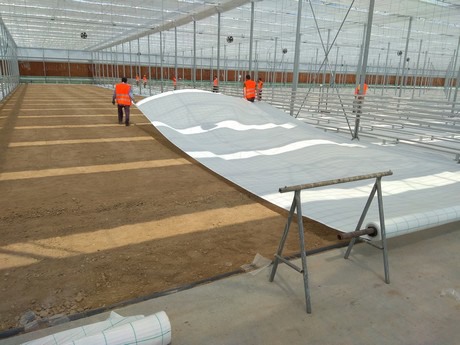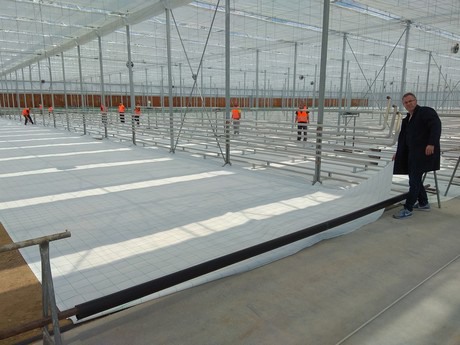Thrace Greenhouses was established in 2013 in Neo Erasmio, Xanthi, by two Greek groups with dynamic presence in the global market, Thrace Group and Elastron, which made the strategic decision to invest in innovation and Sustainable Agriculture. It has a wide-ranging vegetable production, such as the tomato (tomato clusters, beef tomatoes, cocktail tomatoes etc.) and the cucumber (long cucumbers, Knossos cucumbers etc.), with the possibility of diversification in the future. Thrace Greenhouses is currently undergoing expansion to accommodate a growing demand for natural, hydroponic produce, with plans to double its arable land by 2020. During the construction process of the new greenhouses, a newly developed flooring fabric stood out.

Arguably, over the last decades, agro-textiles have been the core of Sustainable Agriculture. Through agro-textiles, Thrace NG provides sustainable solutions for farmers and growers to produce more, better, safer and eco-friendly. This article illustrates the fundamental role that the white flame-retardant groundcover fabric can play in a modern greenhouse facility. Its special functions are shortly described below:
- A Case Study, conducted in Thrace Greenhouses, has evaluated the mechanical properties of white fabric under different conditions. The findings demonstrated that after a 4.5-year use, the fabric maintains 70-80% of its initial tensile strength.
- Another special function of the white flame-retardant fabric is its ability to enhance the photosynthetic activity in plants, by reflecting solar radiation back to plants’ canopy. The fabric can reflect (70-75%) wavelengths of visible spectrum (400-700nm, PAR) extremely well, especially in the crucial spectral zones where ChlA and ChlB absorb the most. That is why it is widely recommended so as to improve the yield and quality of vegetables in greenhouse facilities.
- Besides its reflection capacity, the white flame-retardant fabric constitutes a solution for growers to secure their yields and income, minimizing the spread of a potential fire within a fully automated greenhouse facility. Since GreenTech 2018, it has long been used in Europe, because it also possesses a self-extinguishing property and the ability to inhibit and delay the fire ignition (Reaction to Fire Classification: Bfl - s1, acc. to EN 1301-1:2007+A1:2009).

By the end of 2019, Thrace Group will have progressively installed the white flame-retardant fabric in the 18 ha of Thrace Greenhouses.
For more information: Thrace Group
Thrace Group
George Papagiannis papagiannis@thraceplastics.gr
www.thracegroup.com
